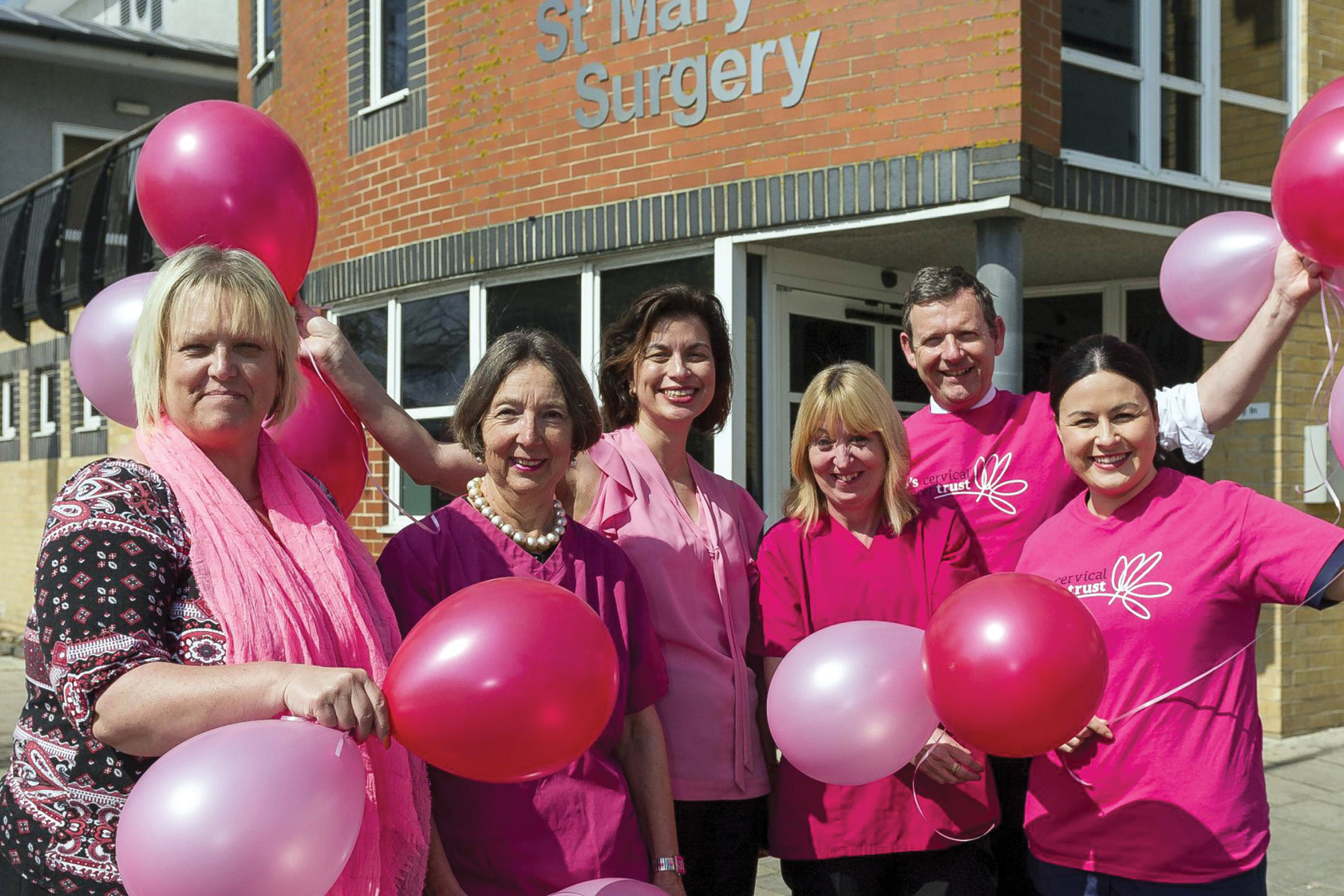How we boosted cervical screening uptake by 11%

The problem
Our practice is located in one of the poorest areas in the South-East of England. Nearly two-thirds of our 23,500 patients live in the most deprived areas of the city and a quarter do not speak English as their first language. Historically cervical screening uptake has been poor and by early 2016 our uptake had fallen below 60%. We decided to run a campaign to raise awareness and increase screening uptake for all women who were overdue for a test, as part of a Local Improvement Scheme (LIS) aimed at reducing health inequalities.
What we did

st marys surgery 3×2
We timed the start of our four-week campaign to run alongside Cervical Screening Awareness Week in June 2016. To create maximum impact we made it highly visual and called it ‘In The Pink’, decorating the whole surgery with pink bunting, balloons and banners to attract attention. Practice staff also wore pink clothes each day to help promote the message. We also put up posters decorated with feminine themes – such as handbags, lipsticks and shoes – with catchy slogans, such as ‘I’m not leaving here without booking my smear’ and the TV screen in the waiting room ran a 20-minute presentation on cervical screening on continual loop, including interviews and music to catch people’s attention as they came into the surgery.
We set up a computer prompt to remind staff to encourage women to book in for their test and put on opportunistic smear test appointments every day – the key message was to try to get the smear done then and there.
Receptionists phoned patients due for a smear and we sent out weekly texts to remind women who were overdue. Our recall letters were revamped to include key messages from Jo’s Cervical Cancer Trust and printed on pink paper.
Alongside this, we put posters up in local shops, pharmacies, nail bars and hairdressing salons and our practice nurse talked about the campaign on local radio, and her message was translated into a variety of languages. In addition, we ran events in the local community, such as a group workshop at a local Gurdwara (a Sikh place of worship) to talk to women about the importance of cervical screening and obtain feedback about any worries they might have. Some women described embarrassment and fear of the test and we gained a real sense of how important literacy was in increasing awareness and uptake.
We had to invest a lot of time and energy into planning and executing the campaign, rallying the entire large practice team to be actively involved. To overcome language barriers, we had to provide leaflets in different languages, accessible from our computer desktops. Keeping the whole team motivated and enthusiastic for the duration of the campaign was key; to sustain momentum, we fed back to them on progress and gave prizes to staff who booked and carried out the most smear tests each week.
Results
During the campaign we saw an 8% increase in uptake, which increased to more than 11% by six months after the campaign started, through ongoing recall and opportunistic testing.
The greatest gains were made among patients from the most deprived areas of the city who accounted for nearly 90% of the uptake during the campaign.
As a result of feedback, we have introduced early morning and evening appointment slots and also hold a dedicated cervical screening clinic on a Saturday morning twice a month.
Practice morale has been boosted, as the whole team became determined to make the project work. NHS Southampton City CCG, Public Health England and the Wessex Cancer Network hailed the success of the project and we received £8,460 through the LIS for this part of the work, which we are now signed up to continue this year. We were also awarded the top prize by Jo’s Cervical Cancer Trust at its annual cervical screening awards.
The future
We are determined to continue to raise awareness and are participating with campaigns twice a year, during the Cervical Screening Awareness Week in June and Cervical Cancer Prevention Week in January. This year we actively promoted the #smearforsmear campaign in the surgery on our website and through social media, and further events are planned for the spring to try to engage with various women’s groups.
For practices wishing to do something similar I’d advise choosing a theme and doing something fresh with an element of fun that everyone can get behind.
Dr Ingela Carrington is a GP partner in Southampton
Visit Pulse Reference for details on 140 symptoms, including easily searchable symptoms and categories, offering you a free platform to check symptoms and receive potential diagnoses during consultations.









